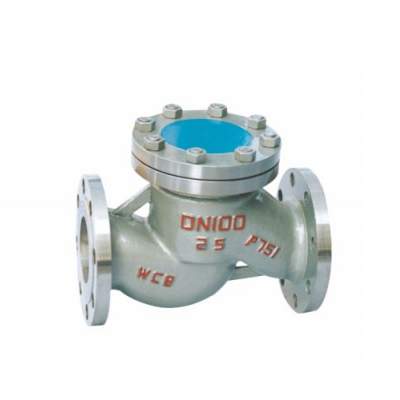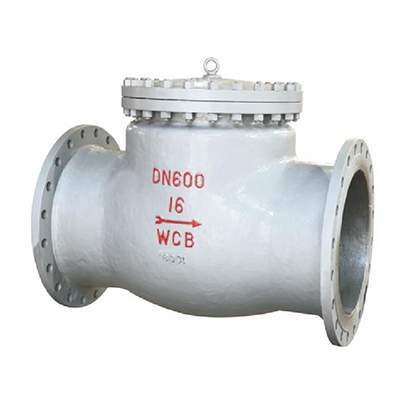Welcome to My Blog!
Before we dive into the content, if you’re interested in our products or have any questions, please feel free to visit our Contact Us page on the website. Our team is ready to assist you with inquiries, orders, or any support you may need.
Now, let’s get started on our journey together. I hope you find the content here insightful, engaging, and valuable.
Introduction

Leaks in pipelines and industrial systems are not only a significant operational challenge but also a costly problem. They can result in downtime, increased maintenance costs, and environmental damage, especially in industries such as manufacturing, oil & gas, and wastewater treatment. As industries strive for more efficient and sustainable operations, finding a cost-effective and reliable solution to prevent leaks has become essential. One such solution is the Check Flap Valve, which plays a crucial role in preventing backflow, controlling pressure surges, and minimizing the risk of leaks. In this article, we’ll explore why Check Flap Valves are becoming the go-to solution for leak prevention, and how their unique design offers significant benefits across various industrial applications.
Understanding How Check Flap Valves Prevent Pipeline Leaks
Check Flap Valves are designed to prevent the reversal of fluid flow, ensuring that it only travels in one direction. By doing so, they effectively stop leaks that might occur from backflow, which can damage equipment, cause contamination, or even lead to catastrophic failures in the system. The valve consists of a flap that opens when the fluid is flowing in the correct direction and automatically closes when reverse flow is detected.
How Check Flap Valves Work
- Flap Mechanism: The flap, which is usually a spring-loaded component, opens when the flow of the fluid is in the desired direction. Once the flow reverses or decreases, the flap closes automatically, creating a seal that prevents the fluid from flowing backward and causing leaks.
- Self-Actuation: Unlike manual valves, Check Flap Valves do not require any operator intervention. This self-acting feature makes them ideal for continuous operations in systems that cannot afford downtime or manual control.
These valves are particularly valuable in applications where backflow could lead to contamination, pressure surges, or equipment damage. Their design ensures that operations run smoothly with minimal maintenance.
Common Causes of Leaks and How Check Flap Valves Solve Them
Leaks in pipeline systems often occur due to a variety of factors, but the most common cause is backpressure or reverse flow. When the direction of flow is unintentionally reversed, it can lead to a number of issues, including contamination of clean fluids, pressure buildup, and eventual system failure. Check Flap Valves are specifically designed to tackle these challenges.
Typical Causes of Leaks in Piping Systems
- Backflow: This happens when the fluid reverses direction, often due to changes in pressure or system malfunctions. Backflow can introduce contaminants into the system, which is especially problematic in drinking water and food processing industries.
- Pressure Surges: Sudden spikes in pressure, often caused by pumps or other machinery, can cause seals to break or valves to fail, leading to leaks.
- Aging Infrastructure: Over time, traditional valves can wear out, corrode, or become damaged, compromising their ability to maintain a proper seal.
How Check Flap Valves Address These Issues
- Preventing Backflow: The primary function of Check Flap Valves is to close automatically when reverse flow is detected, thus preventing backflow from contaminating or damaging the system.
- Pressure Regulation: By ensuring a one-way flow, Check Flap Valves help regulate pressure surges that could otherwise damage the system, reducing the risk of leaks.
- Longevity and Durability: The robust materials used in Check Flap Valves, such as stainless steel or brass, make them highly resistant to wear and tear, extending their lifespan and minimizing the likelihood of leaks due to aging infrastructure.
The Role of Check Flap Valves in Minimizing Fluid Backflow
Backflow is a serious issue in many systems, particularly in water treatment plants, pharmaceutical manufacturing, and chemical processing plants. The ability of Check Flap Valves to prevent backflow makes them indispensable for maintaining system integrity and protecting the safety of the environment.
Key Benefits of Preventing Backflow
- Maintaining System Integrity: When backflow occurs, contaminants from downstream can flow into the clean section of the system, leading to contamination. Check Flap Valves prevent this, ensuring that fluids remain in the correct flow direction.
- Reduces Wear and Tear: Backflow can cause additional stress on pumps, pipes, and other system components, leading to faster deterioration. By eliminating backflow, Check Flap Valves help reduce unnecessary strain on the system, increasing the overall lifespan of equipment.
- Improves Safety: In industries that deal with hazardous materials, preventing backflow is critical. For example, in the pharmaceutical industry, backflow could result in contamination that compromises product quality and safety.
Choosing the Right Material for Your Check Flap Valve
Selecting the appropriate material for Check Flap Valves is crucial for ensuring they perform well under the specific conditions of your system. The material should be chosen based on factors such as fluid type, temperature, pressure, and potential exposure to corrosive elements.
Common Materials Used for Check Flap Valves
- Stainless Steel: Known for its corrosion resistance, stainless steel is ideal for systems that deal with harsh chemicals, seawater, or high-pressure environments. It is also commonly used in food and beverage processing due to its hygienic properties.
- Brass and Bronze: These materials are often used in systems that transport water, oil, or gases, offering excellent durability and resistance to corrosion. They are cost-effective options for systems with moderate conditions.
- Plastic: Plastic Check Flap Valves are lightweight and resistant to corrosion, making them ideal for non-corrosive fluids such as water or non-aggressive chemicals. They are also more cost-effective compared to metal options.
How to Choose the Right Material
- Evaluate Fluid Type: Always consider the compatibility of the valve material with the type of fluid being transported. For example, acidic or caustic fluids require a more resistant material, such as stainless steel.
- Consider Environmental Factors: Extreme temperatures, pressures, and corrosive environments require materials that can withstand those conditions without degrading over time.
How Check Flap Valves Improve System Efficiency and Reduce Leaks
Efficiency is a key factor in reducing operational costs and maximizing output in industrial systems. Check Flap Valves help improve the overall efficiency of systems by ensuring that fluid flows in the desired direction, reducing the risk of leaks and system failures.
Efficiency Benefits of Check Flap Valves
- Reduced Maintenance Costs: Check Flap Valves are designed to require minimal maintenance due to their self-regulating mechanism. Their durability means fewer repairs and replacements, leading to cost savings over the long term.
- Improved Flow Control: These valves ensure that fluid flows smoothly and consistently, optimizing the system’s performance and reducing the chances of leaks or blockages.
- Longer Equipment Lifespan: By preventing backflow and pressure surges, Check Flap Valves reduce the strain on pumps, pipes, and other components, extending the overall lifespan of your equipment and reducing repair frequency.
The Economic Benefits of Installing Check Flap Valves in Your System
While the upfront cost of installing Check Flap Valves may seem higher than traditional valves, the long-term savings they provide make them a cost-effective solution in the long run. The economic advantages primarily come from reduced maintenance costs, fewer repairs, and increased system efficiency.
How They Save Money
- Fewer Repairs: Since Check Flap Valves are designed to be low-maintenance and highly durable, you can expect fewer repairs over the lifespan of the valve, saving significant amounts in maintenance costs.
- Lower Insurance Costs: Preventing leaks reduces the risk of accidents, environmental damage, and contamination, which can result in lower insurance premiums for your facility.
- Energy Efficiency: By ensuring that the flow of fluids is consistent and uninterrupted, these valves help optimize energy consumption, particularly in systems that rely on pumps or compressors.
The Environmental Benefits of Using Check Flap Valves
In addition to their operational and economic advantages, Check Flap Valves offer significant environmental benefits. By preventing leaks and backflow, they help minimize the release of harmful substances into the environment, contributing to sustainability efforts.
Environmental Impact of Leaks
- Pollution: Leaks can introduce harmful chemicals or contaminants into the environment, posing risks to wildlife and ecosystems.
- Resource Wastage: Leaks can result in the unnecessary loss of valuable resources, such as water, chemicals, or energy, leading to higher environmental footprints.
How Check Flap Valves Protect the Environment
- Prevents Contamination: Check Flap Valves help ensure that hazardous or toxic materials do not leak into the surrounding environment, safeguarding water sources and natural habitats.
- Conserves Resources: By preventing leaks, these valves help conserve resources, reducing waste and promoting more sustainable practices.
Why Every Modern Facility Needs Check Flap Valves

In today’s competitive and environmentally-conscious market, modern facilities must ensure maximum operational efficiency and minimize downtime. Check Flap Valves are essential for achieving these goals, as they help maintain a reliable and leak-free system, reducing both operational costs and the risk of environmental impact.
Industries That Benefit from Check Flap Valves
- Oil & Gas: Check Flap Valves are crucial for preventing dangerous leaks and ensuring the safe operation of pipelines in the oil and gas industry.
- Water Treatment: In municipal water systems, preventing contamination from backflow is critical to public health, and Check Flap Valves play a vital role in ensuring clean water delivery.
- Manufacturing: Check Flap Valves help manufacturers avoid downtime caused by leaks, ensuring smooth production processes.
Conclusion
Check Flap Valves are more than just a simple component—they are an essential part of a reliable, cost-effective, and environmentally responsible system. Whether you’re looking to improve system efficiency, prevent backflow, or reduce environmental impact, these valves provide a versatile solution for leak prevention. Their ability to self-actuate, combined with their durability and low maintenance requirements, make them an indispensable tool in ensuring that your operations run smoothly, safely, and economically.
FAQ
How do Check Flap Valves differ from other types of valves?
Unlike manual valves, Check Flap Valves are self-acting and do not require operator intervention. They automatically close to prevent backflow, making them ideal for systems where constant control is not possible.
Can Check Flap Valves be used in high-pressure systems?
Yes, Check Flap Valves can be used in high-pressure systems. However, it is important to select the correct material and valve size to ensure the valve can withstand the pressure requirements.
What industries benefit the most from Check Flap Valves?
Industries such as oil & gas, water treatment, food processing, and pharmaceuticals greatly benefit from Check Flap Valves due to their need to prevent contamination and maintain leak-free systems.
